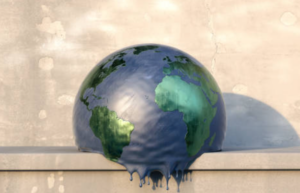Reforestation and Beauty

In a world awakening to the urgent need for environmental responsibility, the beauty industry is stepping forward, planting the seeds of change through reforestation initiatives. Beyond the allure of cosmetic products, a growing number of beauty brands are branching out to embrace sustainability, dedicating themselves to reforestation efforts that go beyond their glamorous packaging and innovative formulas. In this deep dive into the intertwining realms of beauty and reforestation, we explore the green initiatives undertaken by visionary brands, the impact of such efforts, and the evolving landscape of eco-conscious beauty.
1. Commitment to Environmental Stewardship:
The beauty industry has historically been entwined with practices that contribute to deforestation, habitat destruction, and biodiversity loss. Recognizing their role as major contributors to environmental degradation, beauty brands are now taking proactive steps to become stewards of the environment. By investing in reforestation, these brands aim to not only offset their ecological footprint but actively contribute to the restoration of ecosystems globally.
2. Addressing Climate Change:
The beauty industry, like many others, is awakening to the urgency of addressing climate change. Deforestation is a significant driver of climate change, releasing stored carbon dioxide into the atmosphere. By investing in reforestation, beauty brands contribute to mitigating climate change by creating natural carbon sinks. Trees, through the process of photosynthesis, absorb carbon dioxide and release oxygen, playing a vital role in regulating the Earth’s climate.
3. Meeting Consumer Demand for Sustainability:
Modern consumers are increasingly informed and conscientious about the impact of their purchasing decisions. As sustainability becomes a central concern, beauty brands are responding to consumer demand for environmentally responsible practices. Reforestation serves as a tangible and impactful way for beauty brands to align with the values of their eco-conscious consumers. Brands recognize that their commitment to reforestation isn’t just an environmental endeavor; it’s also a strategic response to evolving consumer expectations.
4. Fulfilling Corporate Social Responsibility:
Beyond the allure of cosmetic products, beauty brands are embracing a broader sense of corporate social responsibility. Reforestation initiatives are seen as a way for companies to give back to the planet and contribute positively to the communities they operate in. This commitment extends beyond planting trees; it involves engaging with local communities, creating jobs, and fostering sustainable practices that benefit both people and the environment.
5. Strategic Differentiation and Brand Image:
As sustainability becomes a core value for consumers, beauty brands recognize the strategic importance of differentiating themselves in a crowded market. Reforestation initiatives provide a unique and compelling narrative that goes beyond product efficacy. Beauty brands are leveraging their commitment to reforestation as a key element of their brand image, appealing to environmentally conscious consumers seeking purpose-driven products.
Green Initiatives Blossoming in the Beauty Industry
1. Planting Trees for Every Product Sold:
The “one-for-one” model has become a prominent strategy in the beauty industry’s sustainability playbook. Many brands have pledged to plant a tree for every product sold. This simple yet impactful approach resonates with consumers who seek products that contribute positively to the planet. Brands often partner with reputable reforestation organizations to ensure the trees are planted in regions that need ecological restoration the most.
2. Sustainable Packaging and Refill Programs:
Rethinking packaging is a critical component of sustainable beauty practices. Numerous beauty brands are redesigning their packaging to minimize environmental impact. This includes opting for recycled materials, reducing unnecessary packaging, and exploring innovative, biodegradable alternatives. Additionally, refill programs are gaining popularity, allowing consumers to replenish their favorite products with minimal packaging waste.
3. Collaborations with Reforestation Organizations:
Beauty brands are actively seeking partnerships with reforestation organizations and environmental NGOs to amplify their impact. These collaborations go beyond financial contributions; they often involve active participation in tree-planting events and community engagement. By aligning with established organizations, beauty brands ensure the effectiveness and transparency of their reforestation initiatives.
4. Educating Consumers on Eco-Conscious Choices:
Sustainable beauty practices extend beyond the products themselves; they encompass the entire beauty routine. Beauty brands are taking on the role of educators, creating content that informs consumers about the environmental implications of their choices. This includes explaining the lifecycle of beauty products, advocating for responsible consumption, and offering tips for creating eco-conscious beauty routines.
5. Promoting Circular Economy Principles:
The concept of a circular economy is gaining traction in the beauty industry. Brands are designing products with a focus on longevity, durability, and recyclability. This approach aims to minimize waste by encouraging consumers to recycle packaging or participate in take-back programs. By adopting circular economy principles, beauty brands contribute to a more sustainable and regenerative system.
6. Offsetting Carbon Footprints:
Beyond reforestation, some beauty brands are taking steps to offset their carbon footprints comprehensively. This involves investing in carbon offset projects such as renewable energy initiatives or conservation programs. By balancing the emissions associated with their operations, beauty brands demonstrate a holistic commitment to environmental responsibility.
7. Supporting Indigenous and Local Communities:
Sustainability in beauty isn’t just about environmental impact; it also involves social responsibility. Beauty brands engaged in reforestation often collaborate with indigenous and local communities. These collaborations empower communities through job creation, sustainable practices, and initiatives that prioritize both environmental conservation and social well-being.

Impact Beyond Beauty: Reforestation Stories
1. Restoring Ecosystems:
Beauty brands investing in reforestation contribute to the restoration of diverse ecosystems. Reforested areas not only sequester carbon but also provide habitats for wildlife, protect watersheds, and prevent soil erosion. These efforts have far-reaching positive impacts on the health of the planet.
2. Empowering Local Communities:
Reforestation initiatives often involve collaboration with local communities, empowering them through job creation and sustainable practices. Beauty brands that prioritize social responsibility contribute to the well-being of communities in regions affected by deforestation.
3. Mitigating Climate Change:
By planting trees, beauty brands actively participate in mitigating climate change. Trees absorb carbon dioxide, a major contributor to greenhouse gas emissions. Reforestation initiatives, when scaled up, play a vital role in offsetting the carbon footprint of industries, including beauty.
4. Biodiversity Conservation:
Deforestation threatens biodiversity by destroying habitats and disrupting ecosystems. Reforestation efforts support biodiversity conservation by recreating natural habitats and providing a sanctuary for diverse plant and animal species. Beauty brands engaged in such initiatives play a role in preserving the richness of global biodiversity.

Brands Leading the Reforestation Charge
1. L’Oréal:
As one of the largest beauty companies globally, L’Oréal has committed to ambitious sustainability goals, including being carbon neutral by 2025. In partnership with Pur Projet, L’Oréal is actively involved in reforestation projects worldwide. These projects focus on restoring ecosystems, sequestering carbon, and supporting local communities. L’Oréal’s commitment to reforestation is part of a broader strategy that encompasses sustainable sourcing, reducing water usage, and minimizing environmental impact across its entire supply chain.
2. The Body Shop:
A longstanding advocate for ethical and sustainable practices, The Body Shop has made reforestation a central pillar of its environmental initiatives. Through the “Bio-Bridges” program, The Body Shop has committed to planting 1 million trees by 2023. This initiative focuses on connecting and restoring fragmented habitats to protect endangered species. The Body Shop actively engages consumers in these efforts, encouraging them to contribute to reforestation through their purchases.
3. Aveda:
Aveda, a brand known for its commitment to environmental responsibility, has extended its efforts to support reforestation projects. Aveda partners with the Global Greengrants Fund, a nonprofit organization that channels funds to community-led environmental initiatives. Through this collaboration, Aveda contributes to projects that focus on forest conservation, sustainable agriculture, and community development. Aveda’s dedication to reforestation aligns with its overarching mission to leave a positive environmental footprint.
4. REN Clean Skincare:
REN Clean Skincare has positioned itself as a leader in clean beauty with a holistic approach to sustainability. In addition to using recycled and recyclable packaging, REN has joined forces with “One Tree Planted.” For every product sold, REN pledges to plant a tree, contributing to reforestation efforts globally. This initiative not only supports the environment but also engages consumers in the brand’s commitment to making a positive impact.
5. Origins:
Origins, a brand under the Estée Lauder Companies umbrella, has made reforestation a central focus of its sustainability efforts. The “Plantscription” line by Origins is particularly noteworthy, as the brand commits to planting a tree for every product sold from this range. Origins partners with American Forests, a conservation organization, to carry out these reforestation projects. By tying specific product lines to tree-planting initiatives, Origins provides consumers with a tangible connection to environmental impact.
6. EcoTools:
EcoTools, a brand recognized for its eco-friendly makeup brushes and beauty accessories, takes a comprehensive approach to sustainability. In addition to using recycled materials for its products, EcoTools has partnered with the organization Plastic Bank. Through this collaboration, the brand contributes to reforestation projects and plastic waste reduction simultaneously. EcoTools demonstrates that sustainable beauty goes beyond ingredients and packaging—it’s about embracing a holistic vision that addresses multiple environmental challenges.

Challenges and Opportunities in the Green Beauty Landscape
1. Greenwashing Concerns:
As sustainability becomes a buzzword, there is a risk of greenwashing – where brands falsely claim to be more environmentally friendly than they are. Beauty bloggers and influencers can play a crucial role in holding brands accountable, advocating for transparency, and highlighting genuine efforts in the industry.
2. Consumer Education:
While many consumers are eager to make sustainable choices, there is a need for ongoing education. Beauty bloggers can bridge this gap by creating content that explains the impact of beauty practices on the environment, offering tips for sustainable beauty routines, and spotlighting brands that are truly committed to reforestation.
3. Advocacy for Systemic Change:
While individual brands can make a difference, systemic change is necessary to address the root causes of environmental degradation. Beauty bloggers can use their platforms to advocate for industry-wide shifts towards sustainability, influencing both consumers and brands to prioritize the planet.
The intersection of beauty and reforestation signifies a positive shift in the industry’s values. Beauty bloggers, influencers, and consumers alike can contribute to this transformation by supporting brands with genuine sustainability commitments, demanding transparency, and making informed choices.
As a beauty blogger, consider incorporating eco-conscious content into your platform. Share insights on sustainable beauty practices, spotlight brands making a real impact, and encourage your audience to join the movement toward a greener, more beautiful future. Together, we can nurture a world where beauty is not only skin-deep but rooted in a commitment to the well-being of our planet.

